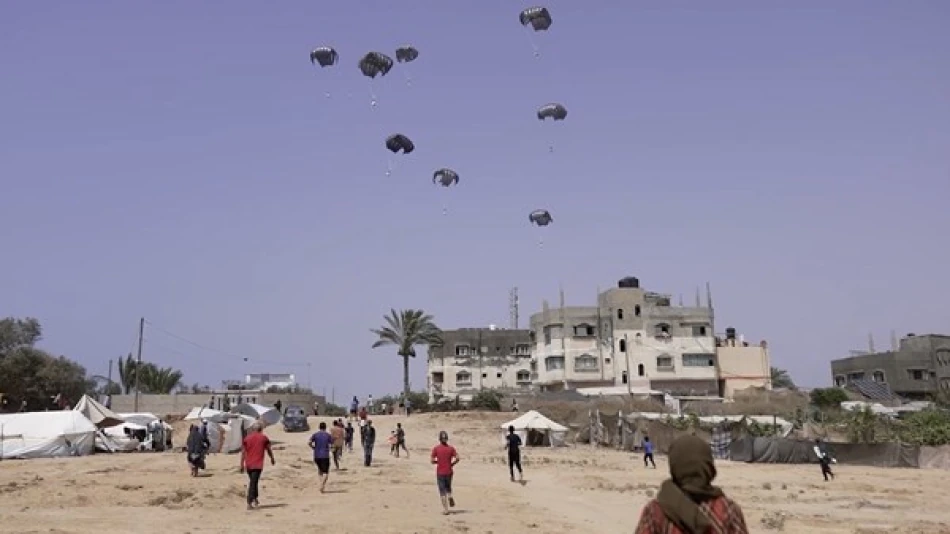
UAE Carries Out 61st Aerial Humanitarian Airlift, Delivers 20 Food Trucks to Gaza
UAE Delivers 61st Airdrop to Gaza as International Humanitarian Coalition Expands
The United Arab Emirates has conducted its 61st airdrop of humanitarian aid to Gaza as part of its "Birds of Goodness" operation, marking a significant milestone in what has become one of the largest sustained international relief efforts for Palestinians. The mission, operating under the broader "Gallant Knight 3" framework, now includes France, Germany, Belgium, and Italy alongside original partner Jordan, signaling growing European involvement in Middle Eastern humanitarian crises.
Massive Scale of Relief Operations
The UAE's humanitarian campaign has delivered over 3,818 tons of food and emergency supplies through airdrops alone, targeting areas in Gaza that remain inaccessible by land due to ongoing conflict conditions. This figure represents one of the most substantial airdrop operations in recent Middle Eastern history, comparable to international relief efforts during major natural disasters.
Beyond aerial deliveries, the UAE dispatched an additional 20 trucks of food aid through ground routes, demonstrating the country's multi-channel approach to humanitarian assistance. This dual strategy reflects lessons learned from previous regional crises where single-mode delivery systems proved insufficient.
Strategic Implications for Regional Diplomacy
UAE's Humanitarian Diplomacy Model
The Emirates' sustained commitment to Gaza relief operations reinforces its position as a key humanitarian actor in the Middle East, following similar large-scale interventions in Yemen, Syria, and Lebanon over the past decade. This approach serves multiple strategic purposes: maintaining regional influence, demonstrating soft power capabilities, and building diplomatic capital with both Arab populations and Western partners.
European Participation Signals Broader Engagement
The inclusion of four European nations—France, Germany, Belgium, and Italy—in the operation represents a notable shift in European engagement with Palestinian humanitarian issues. This multilateral approach mirrors successful international coalitions seen in previous crises, such as the 2004 Indian Ocean tsunami response or Syrian refugee assistance programs.
For European governments, participation offers a way to demonstrate concrete support for Palestinian civilians while maintaining diplomatic flexibility on broader political questions surrounding the conflict.
Operational Challenges and Innovation
The sustained 61-mission airdrop campaign highlights both the severity of Gaza's humanitarian situation and the logistical complexities of delivering aid to conflict zones. Unlike traditional border crossings or port deliveries, aerial operations require sophisticated coordination between multiple air forces and precise targeting to ensure supplies reach intended recipients.
The UAE's experience in similar operations—including airdrops to Afghanistan during Taliban transitions and Yemen during the Saudi-led coalition period—provides operational expertise that smaller European partners may lack, making this coalition structure particularly effective.
Broader Context for Middle Eastern Humanitarian Policy
This sustained relief effort occurs as Gulf states increasingly position themselves as humanitarian leaders rather than merely financial contributors. The UAE's approach contrasts with traditional Saudi or Qatari models that often emphasized monetary donations over direct operational involvement.
The operation also demonstrates how humanitarian assistance can serve as a diplomatic bridge during periods of political tension, allowing countries to maintain engagement with Palestinian issues while navigating complex regional relationships with Israel and other stakeholders.
As the mission continues, its success in delivering aid while maintaining international cooperation may serve as a template for future humanitarian responses in the region, particularly as traditional UN-led mechanisms face increasing political constraints.
 Layla Al Mansoori
Layla Al Mansoori







